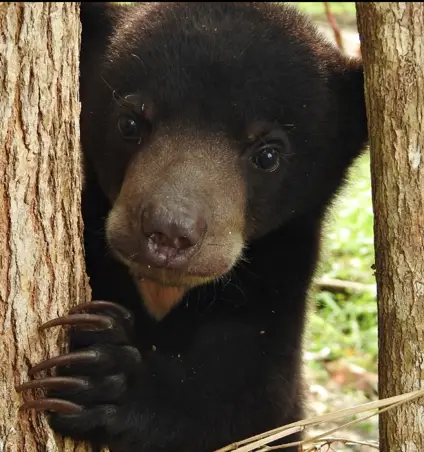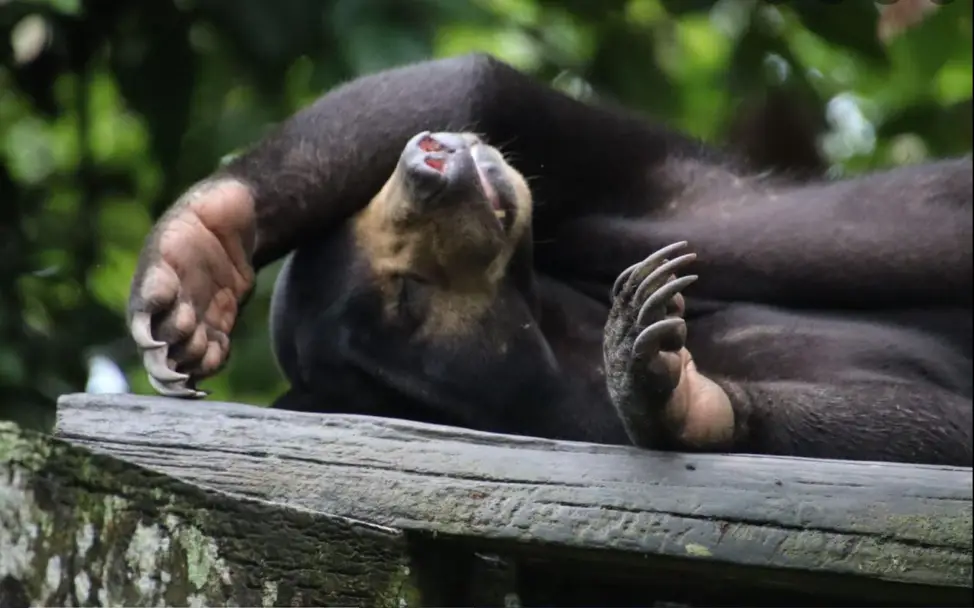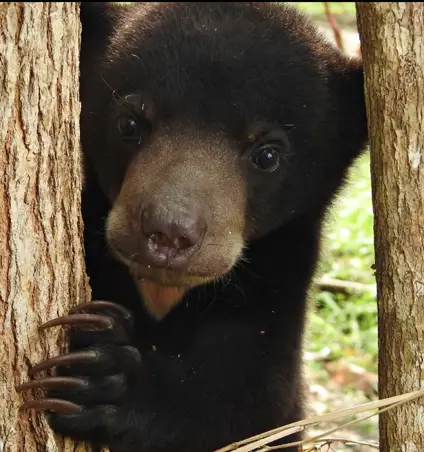1. Yes, they are, in fact, bears.
Unlike misnamed animals like koala bears, which are marsupials, or red panda bears, which are closely related to skunks and raccoons, sun bears are bears.
2. They’re the only tropical bear on Earth.
Even more specifically, sun bears are the only tropical bear known on the planet and only one of two bear species to live in the southern hemisphere. The other species of bear that lives below the equator is the spectacled bear, otherwise known as the Andean bear due to almost exclusively living in the famous South American mountain range.
3. Omnivores but also love honey

Keep your honey jars closed around these guys.
Sun bears are considered omnivores eating everything from lizards and insects to berries and grasses. But one of their favourite treats is honey. Though they’re most commonly called sun bears, they also are known as honey bears because they enjoy this sweet snack.
4. Each bear has a unique sun marking.
The name ‘sun bear’ comes from the fact that these bears have sun-shaped markings on their chests. No two bears have the same rising or setting sun printed on their fur. In fact, the species’ scientific name is ‘helarctos’ which comes from two Greek words hēlios for sun and arctos for bear.
5. They live mostly in Southeast Asia.
Oceans 2 Earth Volunteers works with sun bears in Borneo which is in Indonesia, but these bears can also be found in other areas of Southeast Asia like Thailand and Malaysia or even as far north as China.
6. Watch out for their tongues.
You might want to stand back if you see a sun bear because they have very long tongues. They use their nearly 25-centimeter-long tongues to get honey and insects from hard-to-reach places like inside trees or under logs.

They may look cute, but they have long tongues hiding in their mouths.
7. Smallest bears of them all.
Sun bears are some of the smallest in the world. Their average height is around 1.5 meters and can weigh between 35 to 80 kilograms. In comparison, an adult American black bear can weigh up to 250 kilograms.
8. Orangutans and sun bears have similar lifestyles.
Though you might not expect it since they’re different species, orangutans and sun bears have very similar ways of living. For example, they’re both tree-dwellers meaning they spend most of their time up in the canopy of trees. They even build their nests up in the tree tops.
9. Sun bears are nocturnal.

Never wake a slumbering bear, especially a sun bear during the day.
Even though orangutans and sun bears both sleep up in the trees, they do so at different times in the day. Orangutans are diurnal, active during the day, while sun bears are nocturnal, active during the night. This means they spend the hours we are normally awake lounging in their treetop beds sunbathing and sleeping the sunlight away.
10. They face many threats to their population.
However, despite these amazing facts, sun bears still face many threats to the survival of their population. The biggest threats they have to deal with are habitat loss and illegal wildlife trade. Since sun bears live in trees, logging and deforestation directly impact their ability to live. Additionally, different parts of sun bears are thought to have medicinal properties so poaching has become a main threat to their population.
Now that you know more about these adorable creatures and why helping them is so important, be sure to check out Oceans 2 Earth Volunteers’ Orangutan & Sun Bear volunteer trip to Borneo.


